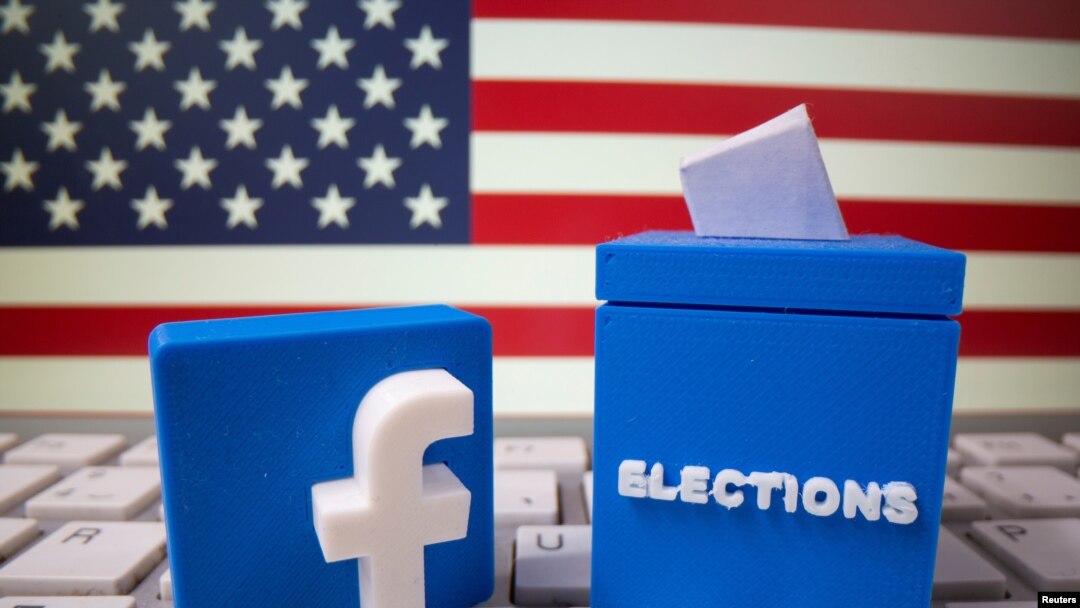There was a time when television and radio ads were king in election campaigns, providing candidates with the most efficient and effective way to reach the greatest number of voters.
While television remains critically important to get political messages across, more than $100 million was spent by the campaigns of President Donald Trump and former Vice President Joe Biden since June on campaign ads just for Facebook or Instagram.
“Campaigns use social media ads to raise money, to find voters and also to get better, a better picture of who their supporters likely are and what their supporters get excited to hear,” said Jennifer Stromer-Galley, a professor at Syracuse University’s School of Information Studies.
She also leads a team at The Illuminating Project, tracking presidential campaign ads on Facebook and its other social media network, Instagram.
Stromer-Galley says Facebook offers “a brilliant microtargeting strategy” that television advertising cannot match.
“If you're a Republican like Donald Trump and you run a TV ad in the Syracuse media market, you're mostly hitting Democrats. But, if you run a Facebook advertising campaign and you find those people in Syracuse who look like Republicans based on Facebook’s algorithms, that's a much more beneficial approach,” she said.

Images of Instagram corporate logos are displayed online on a laptop computer, Oct. 6, 2020.
Money and the medium
Overall, the Center for Responsive Politics projects nearly $11 billion will be spent on the 2020 election campaign, 50% more than was spent on the 2016 election.
According to the Wesleyan Media Project, which tracks and analyzes federal and gubernatorial election advertising, Trump is outspending Biden on social media by about 22% while Biden has outspent Trump on television by 28% since April.
The project also shows the Trump campaign has spent slightly more on Facebook and Google ads than on television ads, which costs about 10 times what social media ads cost.
The Biden campaign is using its fundraising advantage by airing television ads during pricey football games starting last weekend. Recently, the Trump campaign cut back on ads in the Midwestern states of Ohio and Iowa to spend more in the southern state of Georgia and southwestern state of Arizona, where the two candidates are close in the opinion polls.
Social media mining
Campaigns produce many different social media advertisements to see what sticks with voters. Once an ad results in a click-through to the campaign website, the personal information mining begins.
“The more of that information they can get from you, the better they can match that (to what) their databases already have … and can then start building profiles that predict whether or not you're likely to vote for them on Election Day. And then what kinds of messages they should be sending to you on Facebook to try to get you to turn out to vote or to get more involved,” Stromer-Galley said.
WATCH: Different Messages for Different Media Platforms
Your browser doesn’t support HTML5
Campaign Ads Blitz Television and Social Media
Call for action vs. persuasion
Instead of a “call for action,” television campaign advertising tries to persuade voters, usually highlighting a candidate’s character, leadership and policies.
“I've noticed that Trump's advertising on television … the idea that fracking [for fossil fuels] is a major policy matter, that is a differentiator between the Republicans and the Democrats, and they think that issue is resonating. So that's something they're going to advertise and hope that persuades some people to go, ‘oh, yeah, that's an issue that I care a lot about,’” Stromer-Galley explained.
She noticed a distinct difference between Biden’s and Trump’s television ads.
“In his advertisements, (Trump is) more likely to talk about issues than Joe Biden is. Biden is, has kind of been running as the anti-Trump … you don't really see him talking at length or really in much too much extent about policy and issue topics in his campaign advertising,” Stromer-Galley said.


